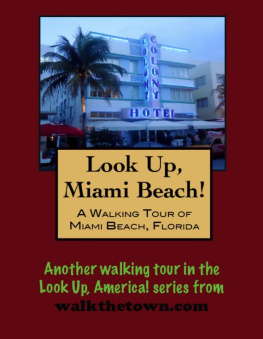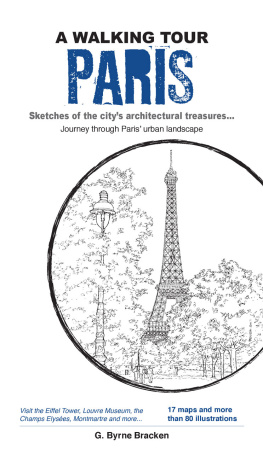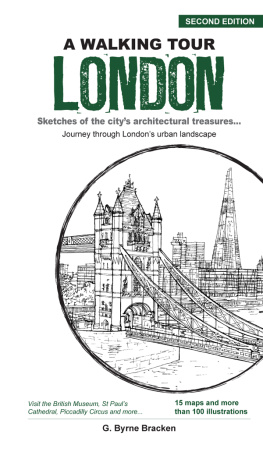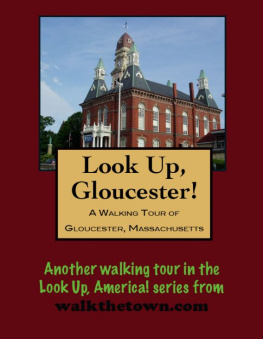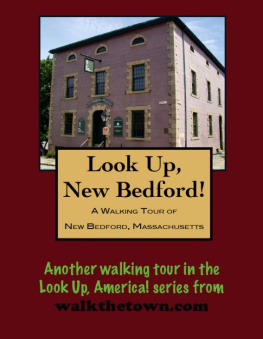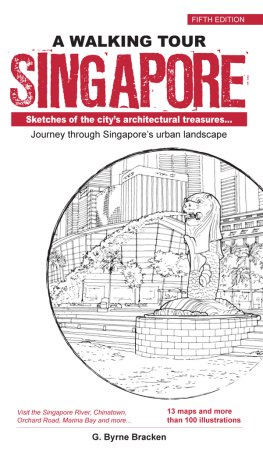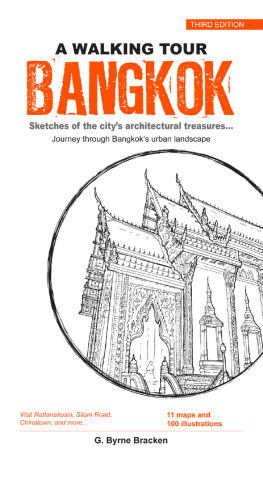A Walking Tour of MiamiBeach, Florida
a walking tour in the Look Up, Americaseries from walkthetown.com
by Doug Gelbert
published by Cruden Bay Books atSmashwords
Copyright 2011 by Cruden BayBooks
All rights reserved. No partof this book may be reproduced or transmitted in any form or by anymeans, electronic or mechanical, including photocopying, recordingor by any information storage and retrieval system without permission in writing from thePublisher.
The first vision anyone had for thedevelopment of the barrier island across Biscayne Bay was as acoconut farm. Charles and Henry Lum bought up land in what wouldone day be known as South Beach and built the first house on theisland in 1886. About 10 years later Henry Flaglers great FloridaEast Coast Railway rolled into the area and entrepreneurs began tosee that the islands 15 miles of sparkling white sand beachesmight be put to a better use than as a cocunut grove.
John Collins, Carl Fisher, andbrothers John N. and James E. Lummus, began gobbling up land on theisland around 1910 and in 1915 they incorporated the town andcreated the city of Miami Beach. The 1920s brought the first tidalwave of money onto the island. Titans of industry with names suchas Firestone and Penney and Champion built mansions on what wouldcome to be known as Millionaires Row. A trolley linked Miami Beachto the mainland. Pastimes for the wealthy northern visitors such asa golf course and greyhound racing were established. By the end ofthe decade Miami Beach was entrenched as one of the great Americanbeach resort towns.
The hotels and surrounding structuresthat went up to accommodate this tourist trade were designed tofoster Miami Beachs image as a tropical playground. In the 1920smost of the buildings were fashioned in an Old World Mediterraneanstyle that was guaranteed to appear exotic to the denizens ofcrowded industrial cities up north. In the 1930s the architectureshifted to the fanciful Art Deco style with buildings dressed invibrant colors and illuminated in stylish neon. Miami Beach has thelargest collection of Art Deco architecture in theworld.
In 1979 Miami Beachs Art DecoHistoric District was listed on the National Register of HistoricPlaces. There are more than 800 contributing structures in thedistrict including hotels, apartments and other structures, mostraised between 1923 and 1943. We will see more than 50 on ourwalking tour, all decked out with variations of sleek curves,eyebrow windows, glass blocks, spires, ship-like railings, gleamingchrome, porthole windows and other imaginative affectations. Butbefore we start looking at buildings well begin on a strip of landthat has been a park for almost 100 years and where you can seesomething more famous than Miami Beachs Art Deco hotels - thebeach...
1.
Lummus Park
5th Street at OceanDrive
John N. Lummus arrived in Miami in1895 and quickly became enamored with the areas potential. A yearlater when Henry Flaglers Florida East Coast Railway reached townLummus was back working as a train dispatcher. Meanwhile hisbrother James had established a general store in town. In 1912,with visions of beach-front single family homes dancing in theirheads, the Lummus brothers acquired 500 acres south of 14th Streetand established the first building lots on Miami Beach throughtheir newly formed Ocean Beach Reality Company. In 1915 the Town ofMiami Beach was incorporated by the Lummus brothers and fellowdevelopers John Collins and Carl Fisher and the brothers sold thebeachfront slab of their land from 5th Street to 14th Street to thecity. Buffering the hotels of Ocean Drive from some of MiamiBeachs finest sand, Lummus Park has remained open space for nearly100 years.
WITH YOUR BACK TO THE OCEAN WALK OUTTO OCEAN DRIVE AND TURN LEFT.
2.
Savoy Hotel
425 Ocean Drive
With two acres of beachfront propertythe Savoy is the only hotel on Ocean Drive located directly on thesand. Victor Hugo Nellenbogen, a Hungarian-American, contributedmany Art Deco designs to Ocean Drive and the Savoy, opened in 1935,in considered one of his best.
TURN AND WALK BACK TO LUMMUS PARK TOSTART TOURING OCEAN DRIVE. STAY ON THE OCEAN SIDE OF THE STREET TOBETTER SEE THE HOTELS.
3.
The Bentley Hotel and Beach Club
510 Ocean Drive
Anchoring this corner at Miami BeachDrive is a 1939 landmark hotel whose art deco architecture has beenmeticulously restored. Of particular interest is its palm-speckledrooftop terrace.
4.
Beach Paradise Hotel
600 Ocean Drive
Buildings constructed in Miami Beachwere designed almost exclusively in the Mediterranean Revivalstyle, an often whimsical interpretation of the Old World. Beforethe wave of Art Deco washed over Ocean Drive this 51-room boutiquehotel opened in 1929.
5.
Park Central Hotel
640 Ocean Drive
Armed with a Pratt Institute educationfrom Brooklyn, New York architect Henry Hohauser came to Florida in1932 at the age of 37 and quickly established one of Miamisbusiest practices. The stylish Park Central is one of his signatureworks, wrapped in corner windows that climb the six-story hotel,the tallest Art Deco creation on Ocean Drive. The Park Centralopened in 1937 and for its 50th birthday it received the firstmakeover of Miami Beachs hotels. Permanently parked out front onOcean Drive is a sleek 1947 Buick. It has been claimed that theconga line first weaved into America on the dance floor of the ParkCentral on New Years Eve 1940 under the direction of 22-year oldCuban bandleader Desi Arnaz.
6.
The Majestic Hotel
660 Ocean Drive
This Art Deco 49-room hotel wasdesigned in 1940 by Albert Anis who gave his creation nocontrasting horizontal elements. Peek around the corner to see whathappens when you own a corner property but dont have the money tocarry the decorative ocean-facing facade all the way down thestreet.
7.
Avalon Hotel
700 Ocean Drive
The classic look of this 1941 Art Decohotel is enhanced by the vintage Oldsmobile convertible parked outfront.
8.
Beacon Hotel
720 Ocean Drive
Henry O. Nelson added this layeredconfection to the Ocean Drive streetscape in 1937. The Art Decoemphasis on verticality is emphasized by strips of diamonds andcircles enclosing a slightly protruding central bay. The crispfacade is one of the few at the beach to not provide any relieffrom the sun for the windows. In 1946 the hotel was sold and thenew owners added 22 rooms in the spreading wing.
9.
The Colony Hotel
736 Ocean Drive
This hotels iconic neon-accented signgives this building a feel of soaring verticality even though it isonly three stories. The Colony, built in 1935, was one of theearliest efforts from Henry Hohauser who would eventually designover 300 buildings in town.
10.
Starlite Hotel
750 Ocean Drive
The Starlite was another project byarchitect William Brown, opened in 1929. The symmetrical facade isbroken by a band of tiles on the northern side.
11.
Shore Park Hotel
820 Ocean Drive
E.A. Ehrmann designed this hotel in arestrained Mediterranean Revival style in 1930. The restaurant hereis one of several Cuban-themed eateries owned by Latin Popsongstress Gloria Estefan.
12.
Pelican Hotel
826 Ocean Drive
This began as a HenryHohauser-designed hotel in the 1940s - it was a twin of the PenguinHotel you will see further up Ocean Drive. That htoel retains muchof its original appearance but that pedigree was lost here when itwas renovated in 1994 by the Diesel Jeans company with each roomindividually designed by Swedish decorator and flea market habitue,Magnus Ehrland. The guest book is littered with the names of therich and famous, headed by Saudi Arabian Prince Faisal who wontstay anywhere else but the Pelican penthouse when in town. Heprobably never tires of watching the goings-on in the six-foottropical fish tank.
Next page
